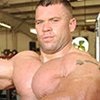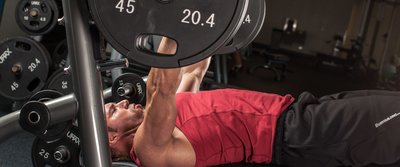The most basic way to attack an exercise is to follow what's known as an ascending pyramid: You progressively increase the weight each set, and lift fewer reps per set as your muscles and joints become increasingly warmed up. This approach enables you to handle the most weight on your final set, which represents the top of the pyramid. This is a solid way to build foundational strength, but it may not be the best way for intermediate and advanced lifters to crush their strength barriers.
I'm going to share with you a basic training method that can help advanced lifters bust past any plateau and even increase their strength by as much as 10 percent in less than two months. It's not as simple as following a pyramid scheme each week, but the extra computation required to follow it will pay huge dividends in the end.
I have personally used variations of this method, called wave loading, since I was in junior high. Even though I didn't know what this protocol was called at that time, it worked well for me then, and it's worked exceptionally with both my average and elite-level strength-training clients long since.
I'm going to show you how wave loading can increase your strength on the bench press, but keep in mind that the principles could be used to increase your squat, deadlift, clean, overhead press, or any other lift.
How Wave Loading Works
To understand wave loading, picture a series of waves on the ocean. First, a small set of waves rolls up the beach. It pulls back, and then a successive set of waves rolls in even higher. Finally, an even more powerful wave comes in last and washes all the way up the shoreline. In many ways, the waves build on each other and push each other to reach even farther up the shore.

By building up your working weight in waves, each consisting of three sets, you can overcome your previous max because of a phenomenon called post-tetanic facilitation, which prime the central nervous system. You’ll have to take a full rest between sets, though.
Wave loading works in a similar fashion: You progressively build up to lifting heavier weights—heavier than you currently lift, even—in "waves" of 3 sets each, eventually peaking with a final wave above your current max. My mentor, Charles Poliquin, a renowned strength coach who's trained many Olympians, defines the protocol as "a ramping system used to progressively excite the nervous system."[1]
Including warm-ups, a traditional wave for someone who can currently bench press 300 pounds—and wants to lift even heavier—looks like this:
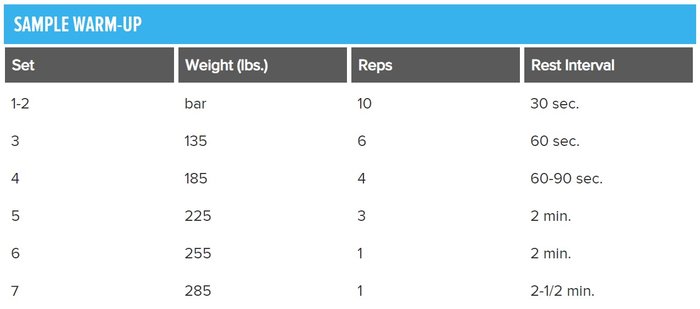
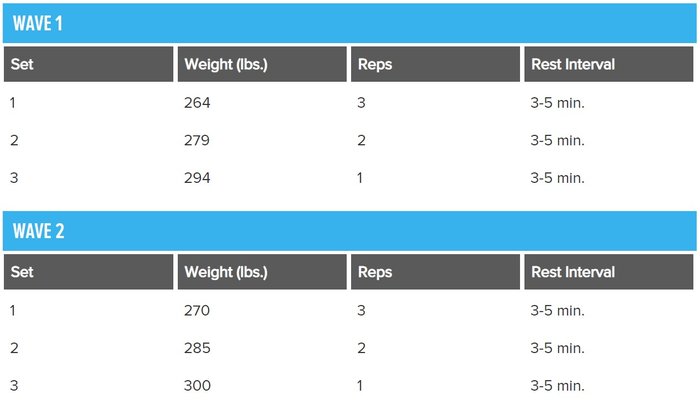

Each wave calls for an additional 5 pounds to be added to each set, or 2.5 pounds per side. Many athletes start with two waves the first time they try this protocol, although some exceptional athletes can actually follow three or more waves. By following this process, you'll actually be able to beat your current best!
Why? Wave loading works based on the principle of what's called post-tetanic facilitation. The earlier sets, in the words of exercise-science author Jim Stoppani, PhD, "prime" the central nervous system and working muscles in such a way that they're able to contract with greater amounts of force. The priming simply allows you to lift more weight on the later sets.[2]
Poliquin eloquently described the wave effect thusly: "The top single always makes the first set in the following wave feel lighter than if the single was not done beforehand. Essentially, each cycle feeds itself," and you reap the strength benefits.[1]
With this in mind, realize that the first wave will probably be the most difficult. Still, the sheer number of heavy sets might make it hard for some individuals to successfully use this system, so I'd recommend it for seasoned lifters only, and I'd suggest you keep a spotter handy. Don't be afraid, though. You can only grow if you try!
Building a Wave-Loading Program
For the purposes of this training plan, and for safe progression, we are going to adapt the traditional wave-loading protocol a little bit. With this plan, always stop before you hit muscle failure! That means no missed reps because you were pushing to get just one more. If you miss a rep, stop the wave and back off.
Even though you're not training to failure, I still think a spotter is mandatory. Also, if you plan to run this program weekly, don't exceed three waves per workout.
After warm-ups, a wave program should be constructed based around percentages of your one-rep max (1RM). You can use an online rep-max calculator to get into the ballpark of your current max. I then recommend busting out your own calculator and using the percents below to calculate your working weights, because too much rounding up or down eliminates the small, incremental changes that are necessary with such a program.

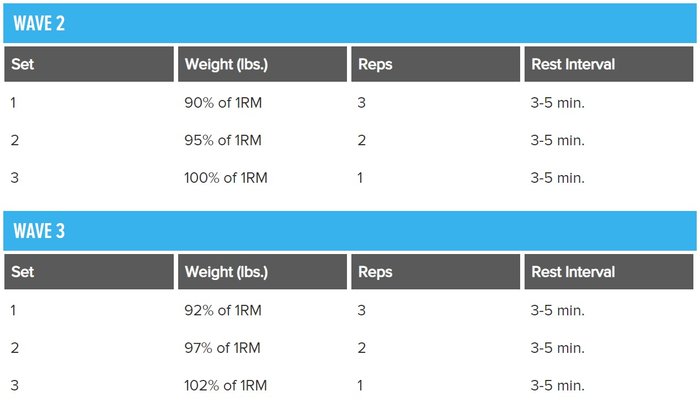
Completing Your Workout
To finish off your chest workout, pick one accessory exercise from each group listed below, and perform it in the prescribed rep range. Choose a weight that's as heavy as possible, but always stop one rep short of muscle failure.
- If you completed 1-2 waves, complete 3-4 sets of any one exercise from Group 1, Group 2, and Group 3.
- If you completed three waves, complete 2-3 sets of any one exercise from each of the three groups.
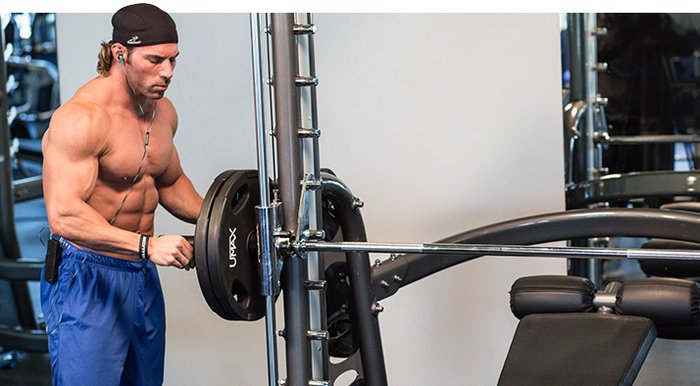
Group 1: 4-6 reps
Parallel-bar dip, close-grip bench press, Spoto press
Group 2: 6-8 reps
Pause dumbbell bench press, any incline press variation, floor press
Group 3: 10-15 reps
Any triceps extension variation, triceps dip, any triceps press-down variation
Further Guidelines for Success
- Perform the concentric phase on the bench press as explosively as possible.
- Don't perform this program more than once per week. A second day of lighter accessory work is fine.
- Completing two waves or more calls for a two percent increase in the following weeks' starting weights. If you can't complete at least two waves with the higher weight, don't add weight the following week.
- If you miss a weight, move on to the accessory exercises. Don't try to complete the next wave. Repeat the workout using the same weights the following week.
- Don't train like a bodybuilder and push for extra reps by going to muscle failure. Follow the program closely.
- This program doesn't have to be run weekly. It can be used sporadically to shake things up. Once a month works great, keeping with same progression.
- Because it's highly taxing, this program should not be run weekly for more than six consecutive weeks.
- Target your weaknesses with the accessory work, keeping in mind that everything should benefit your bench press.
Wave Goodbye to Your Old Max
If your strength levels haven't improved since the release of the original iPhone, wave loading is going to take your strength to a whole new level. Keep in mind that this method is an effective tool to increase strength with any movement, but I recommend sticking to core multijoint exercises.
It's kind of a waste with a lateral raise. Since wave loading can produce results within just a few workouts, give it a try and let us know your results in the comments section below!
References
- Poliquin, C. (2015, July 15). Wave-like Loading: A Great Method to Achieve Maximal Strength. Retrieved from http://www.strengthsensei.com/wave-like-loading-a-great-method-to-achieve-maximal-strength/
- Stoppani, J. (2011). Encyclopedia of Muscle & Strength. Human Kinetics.
